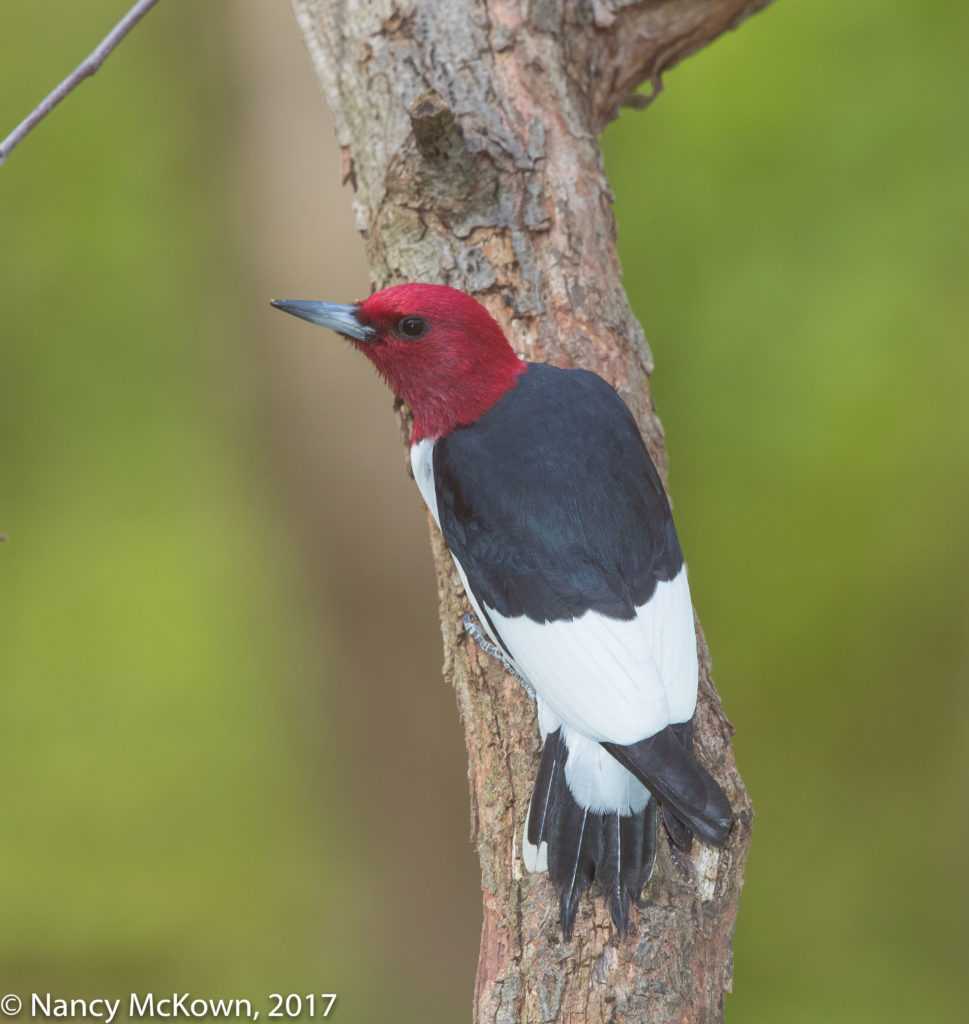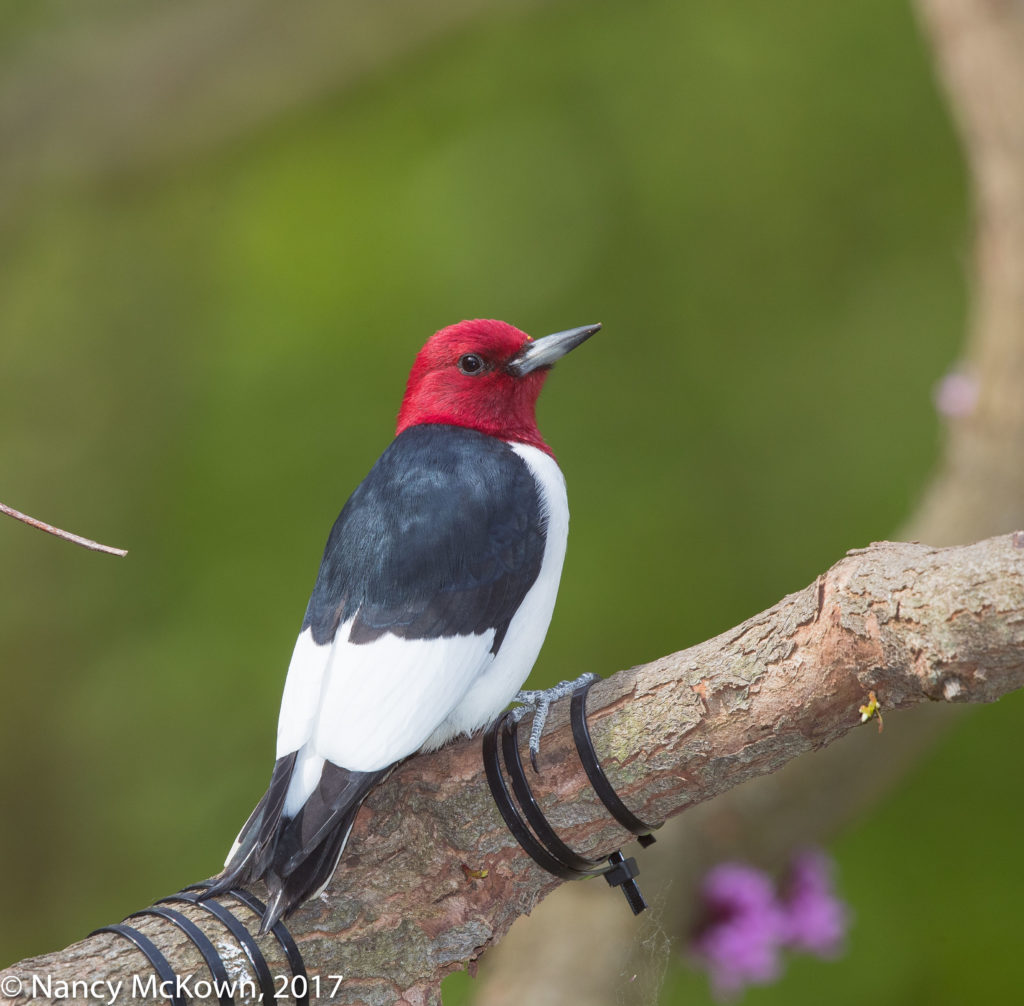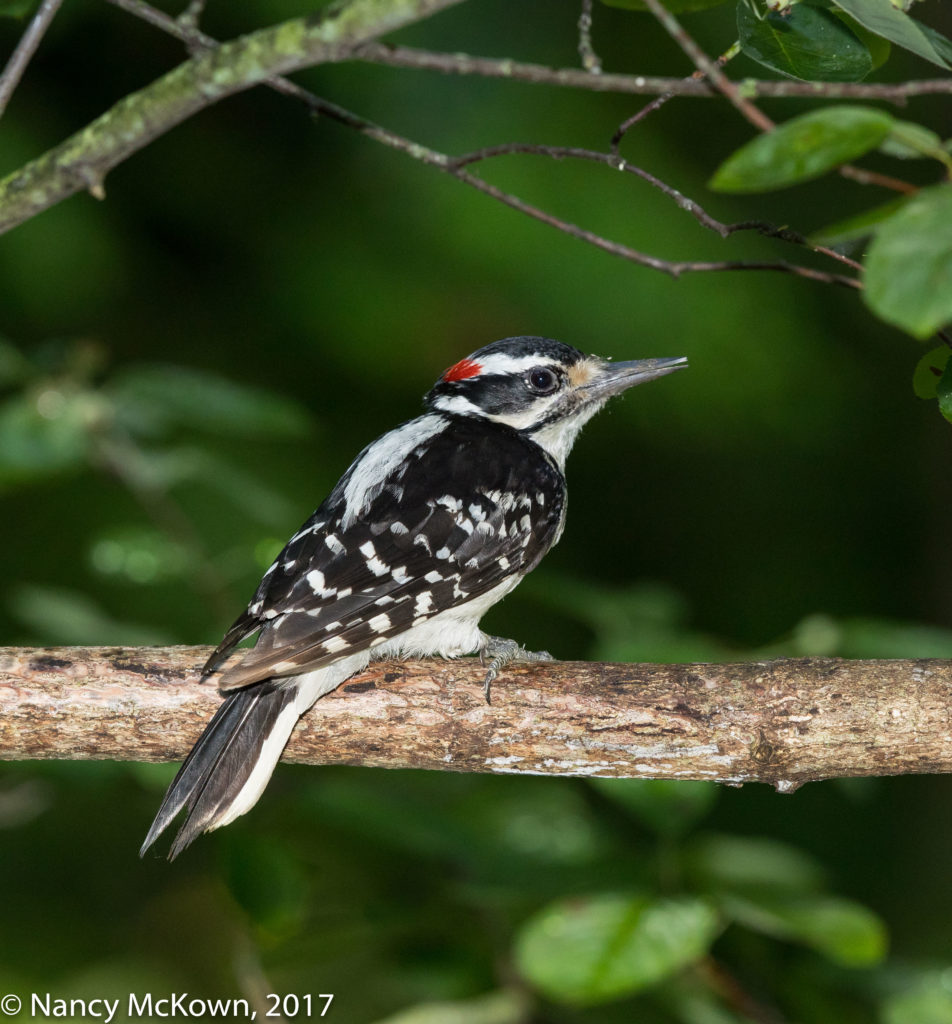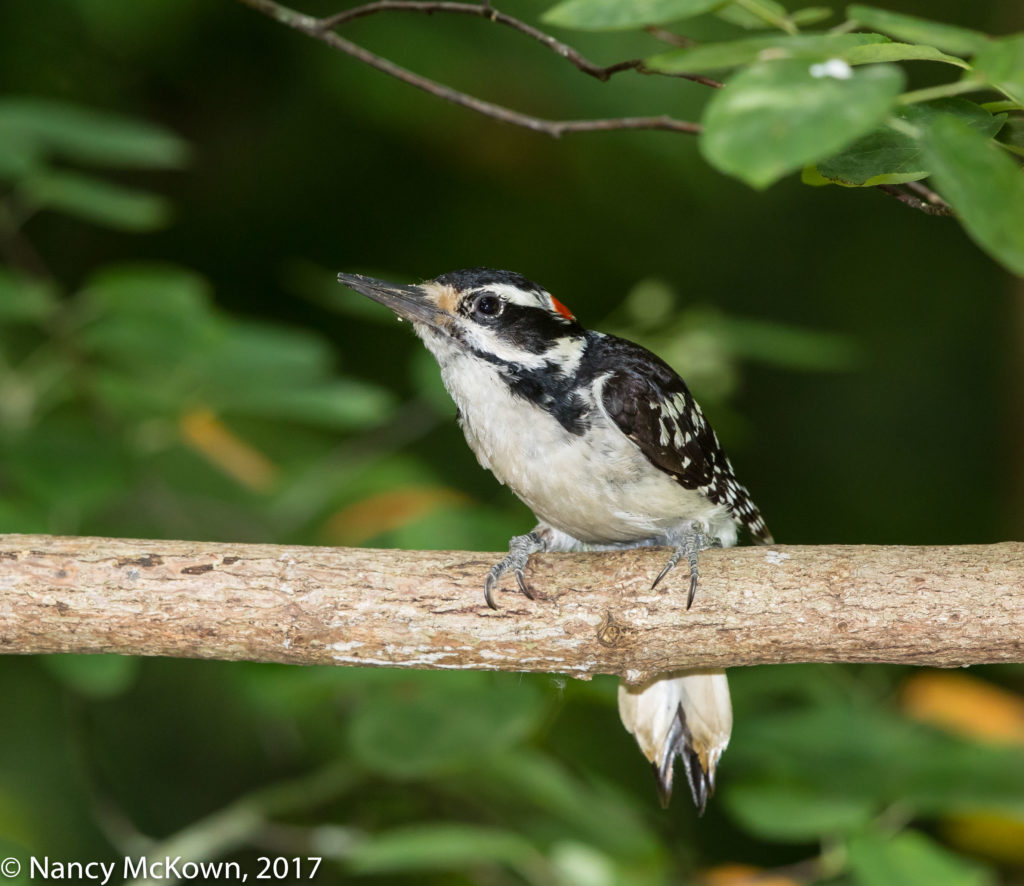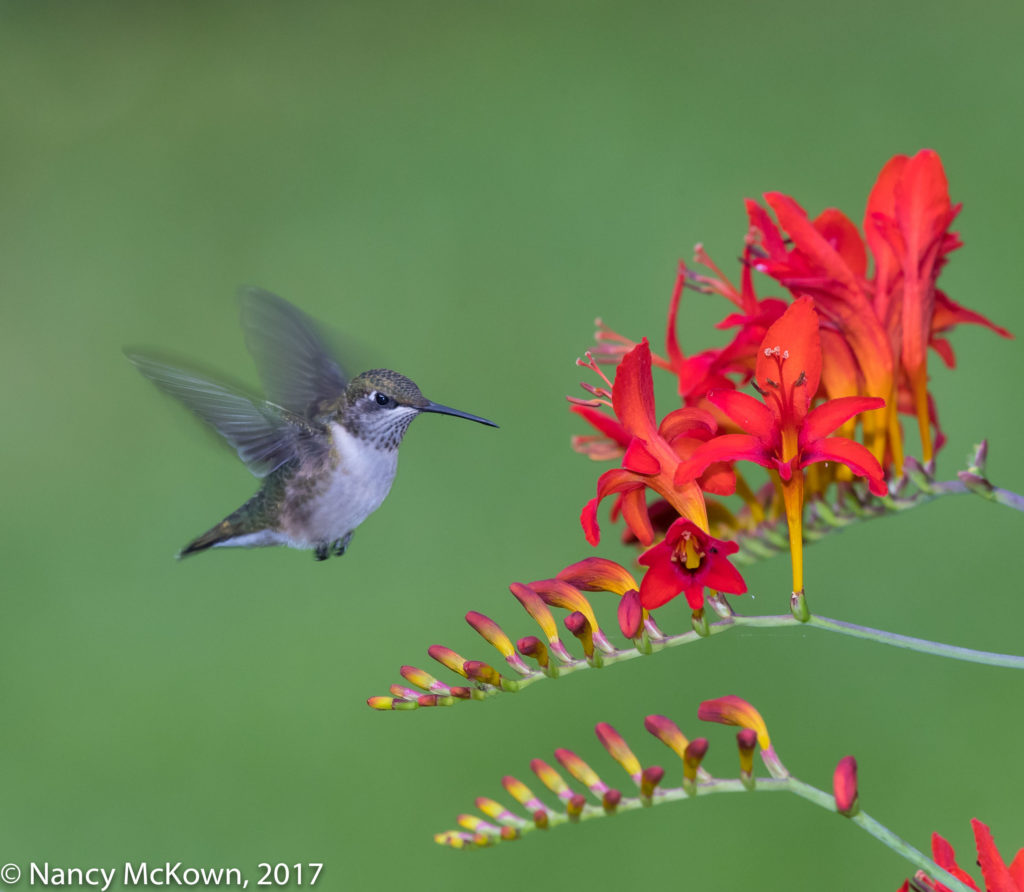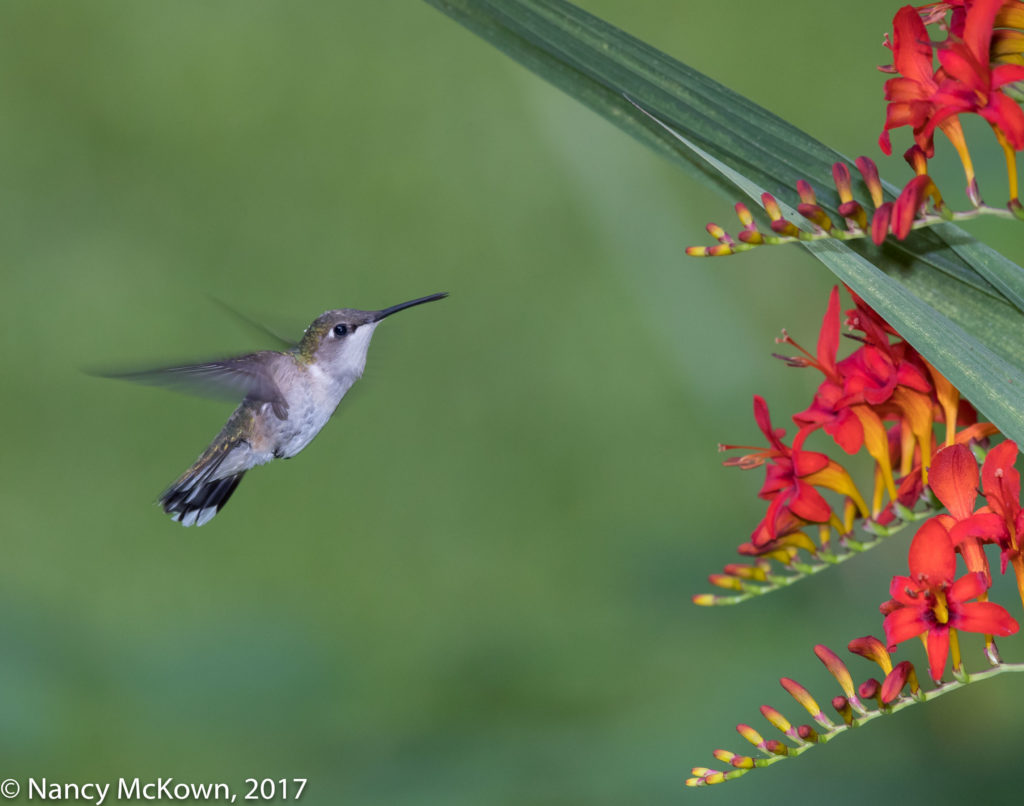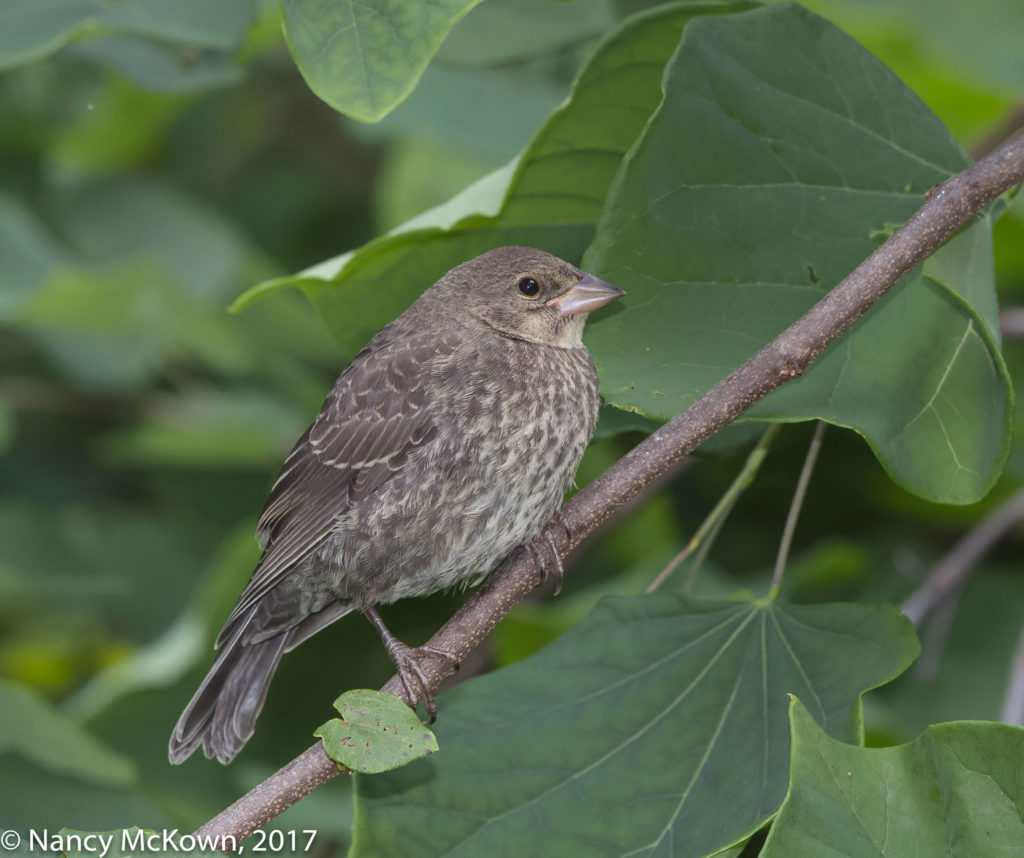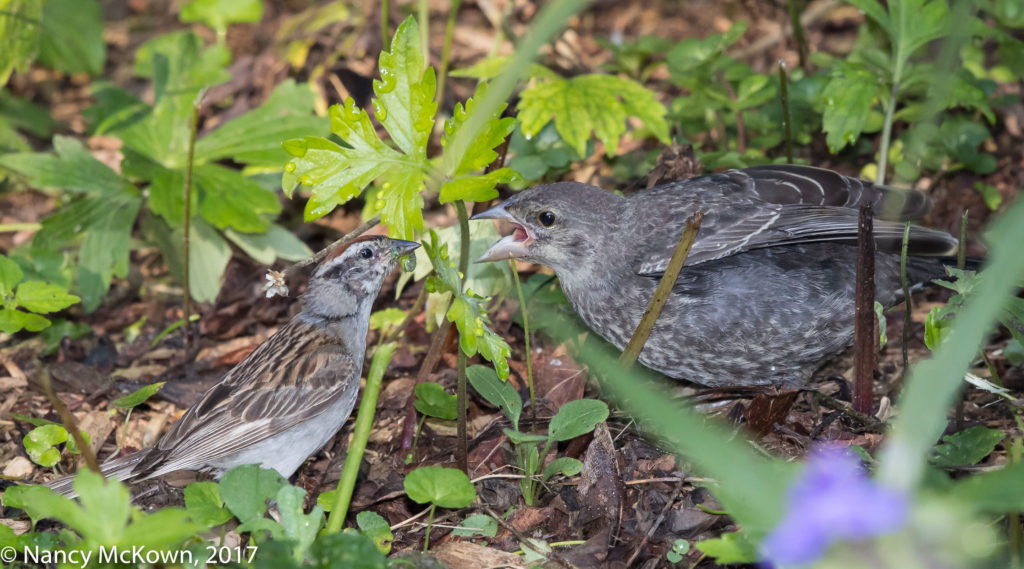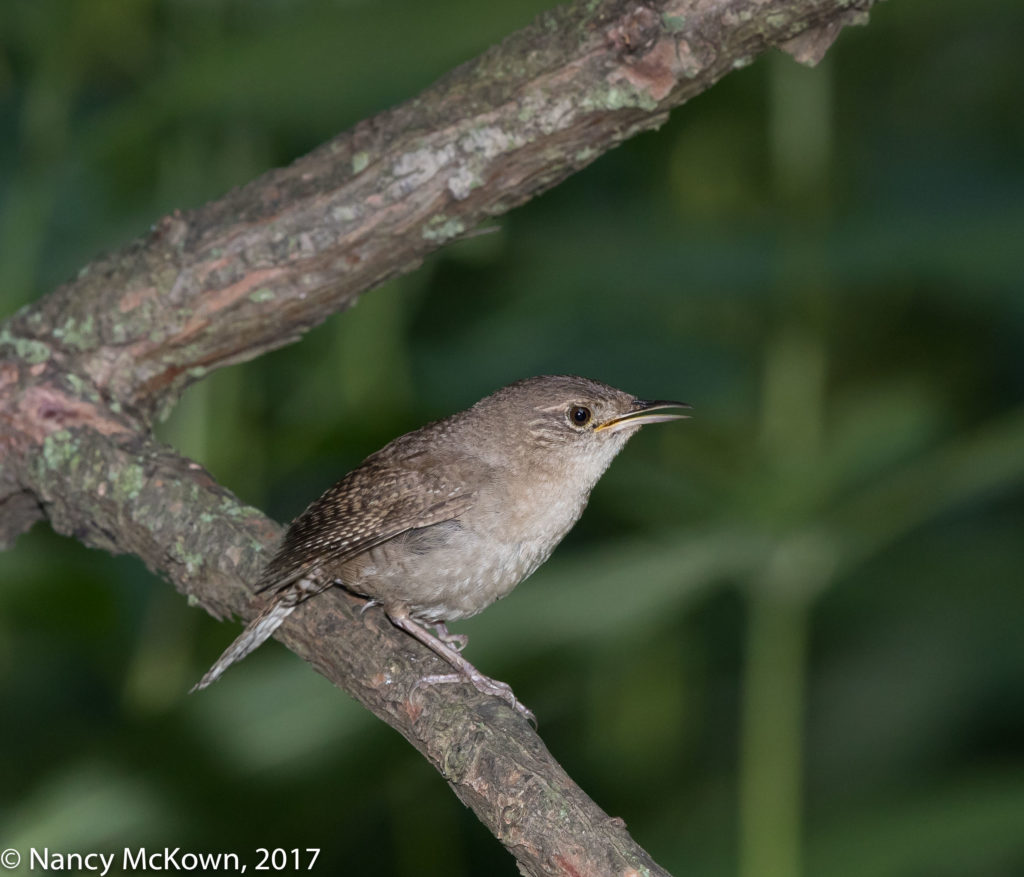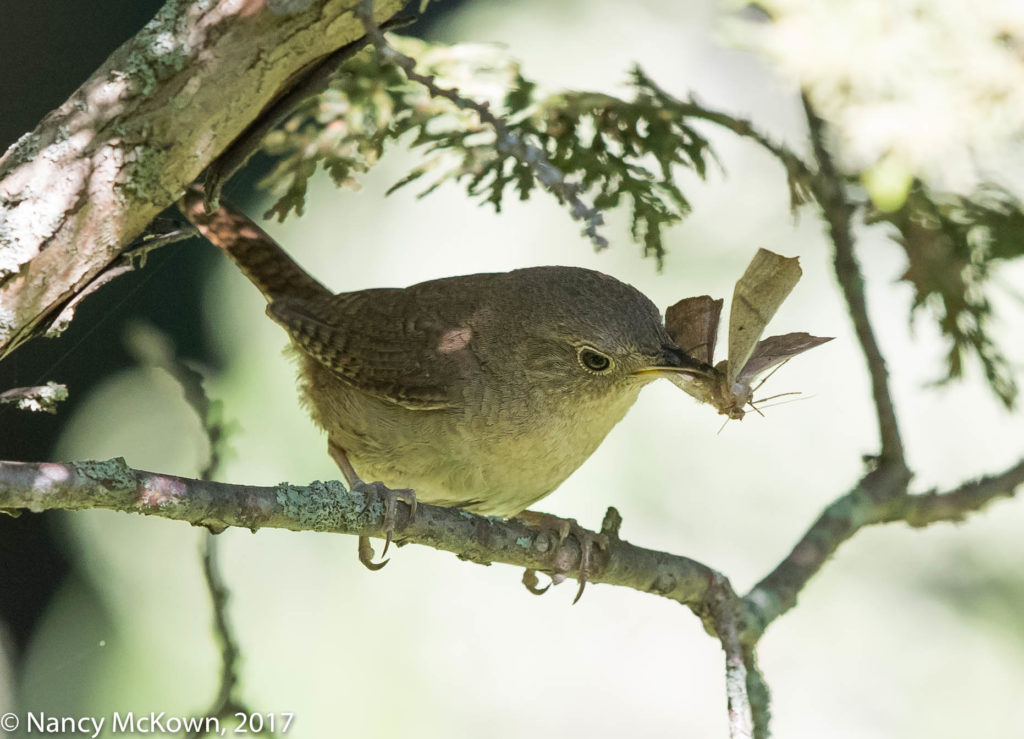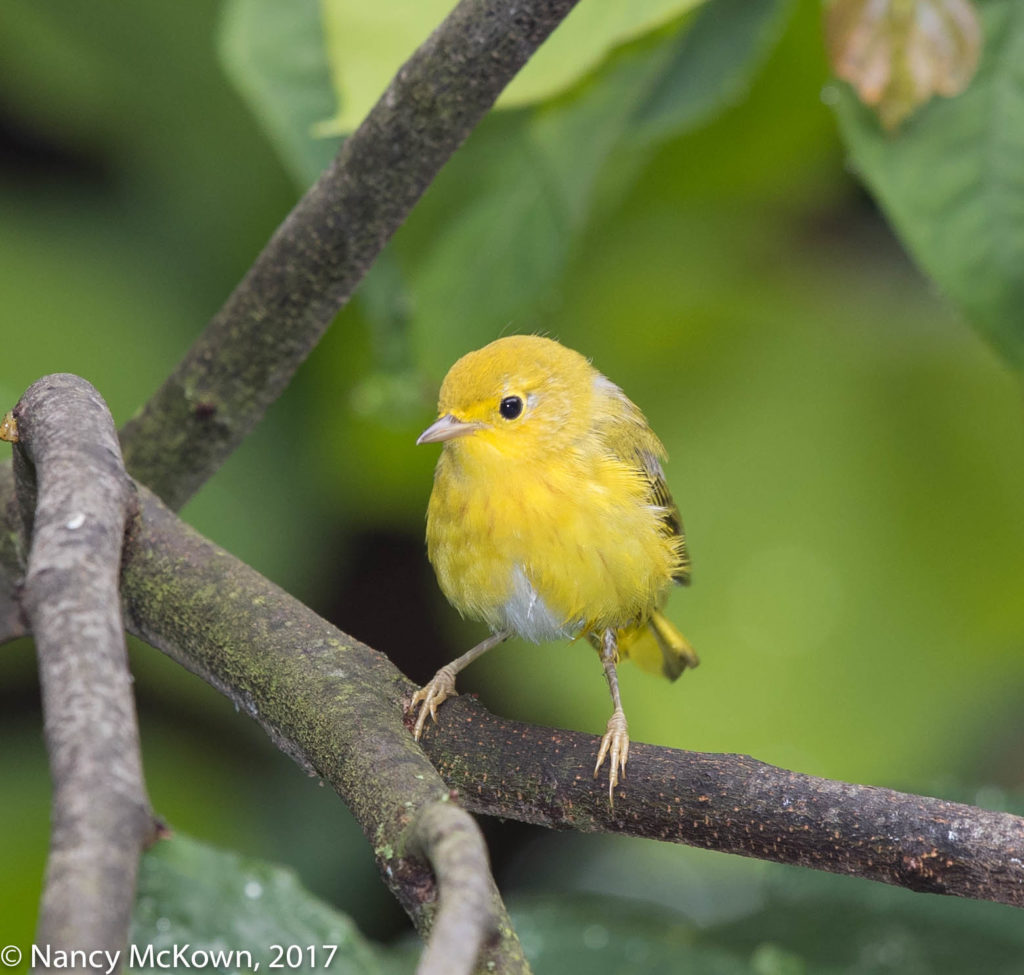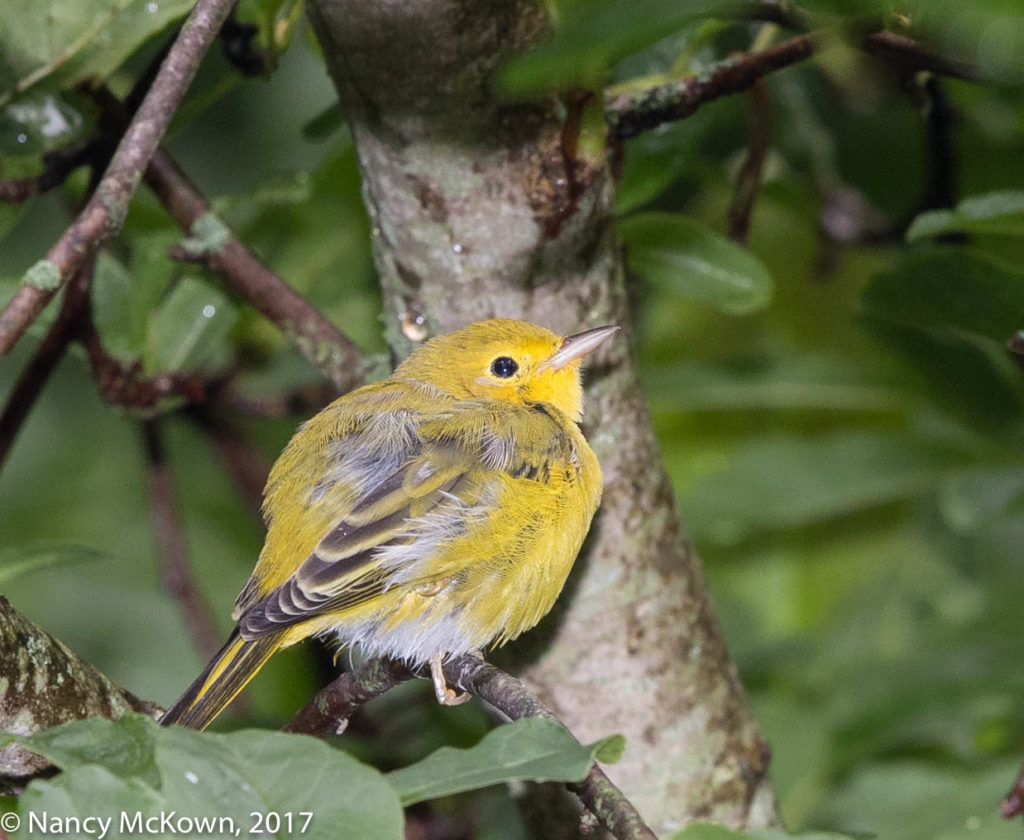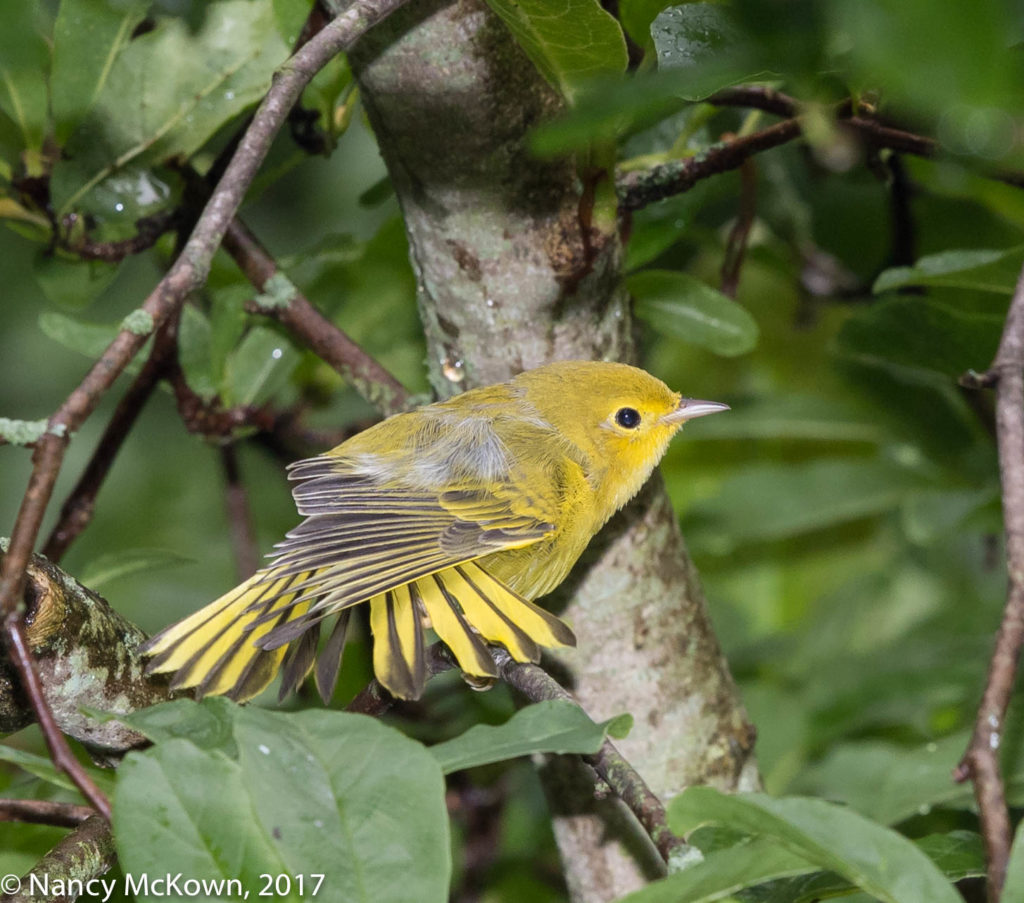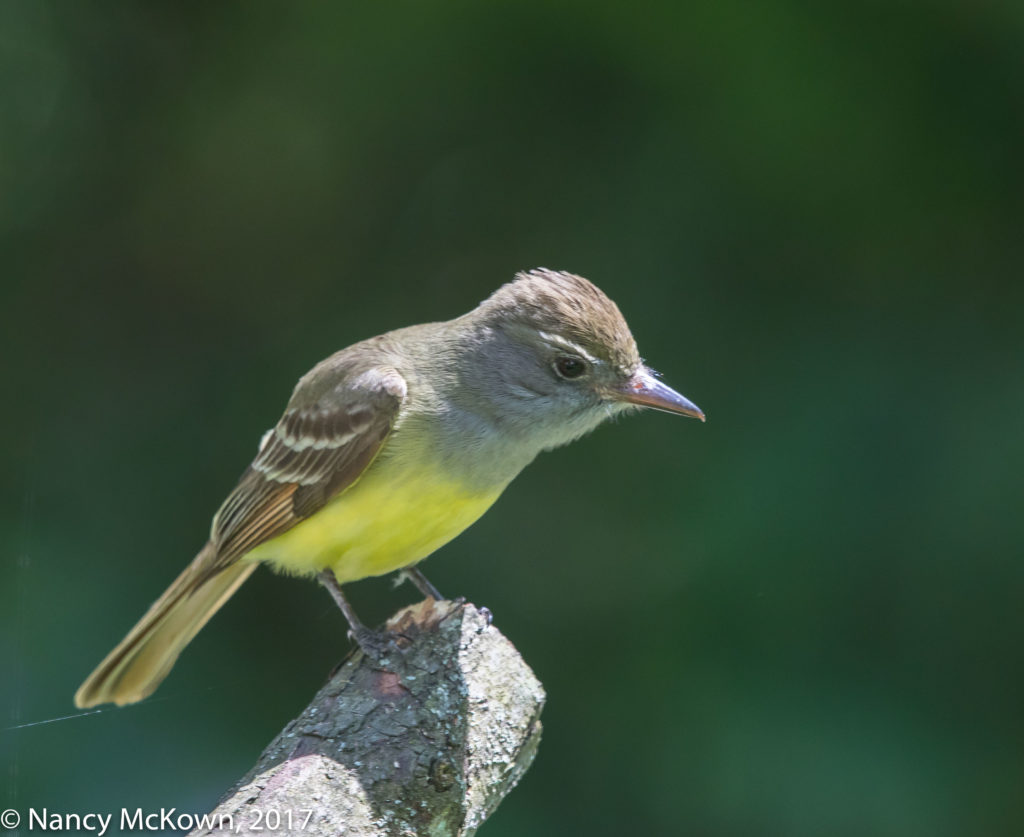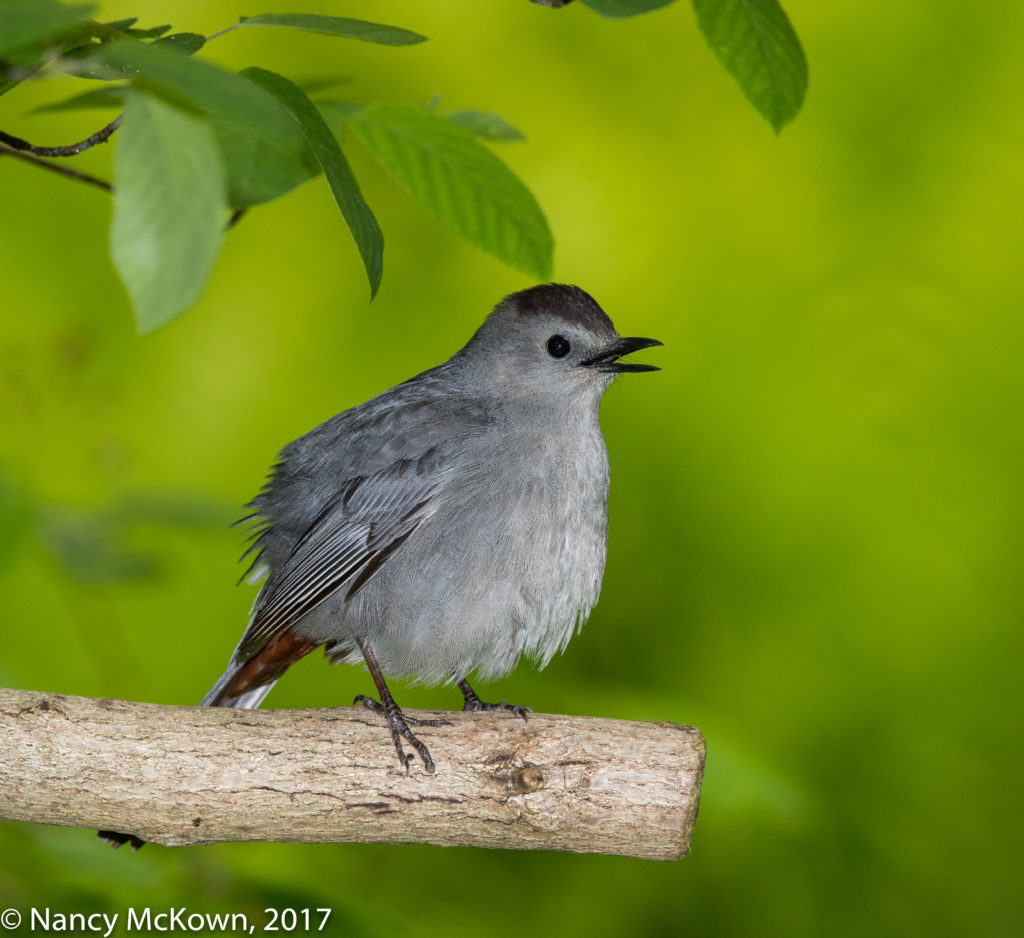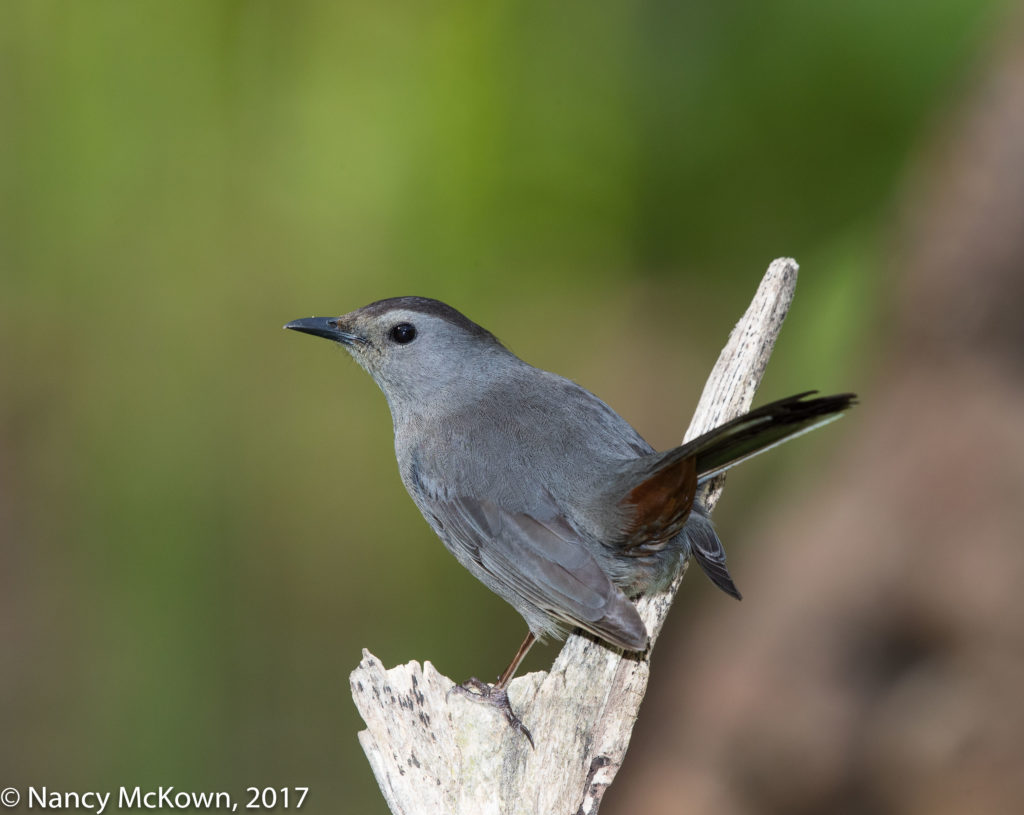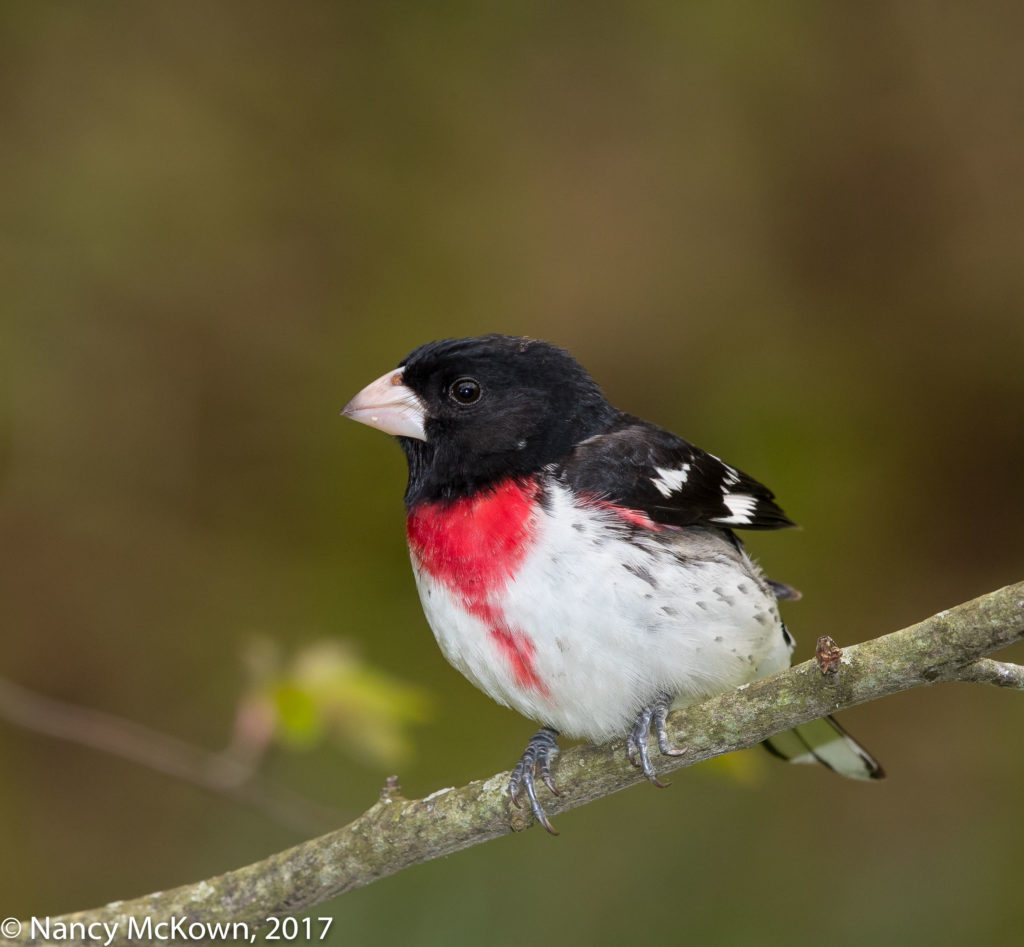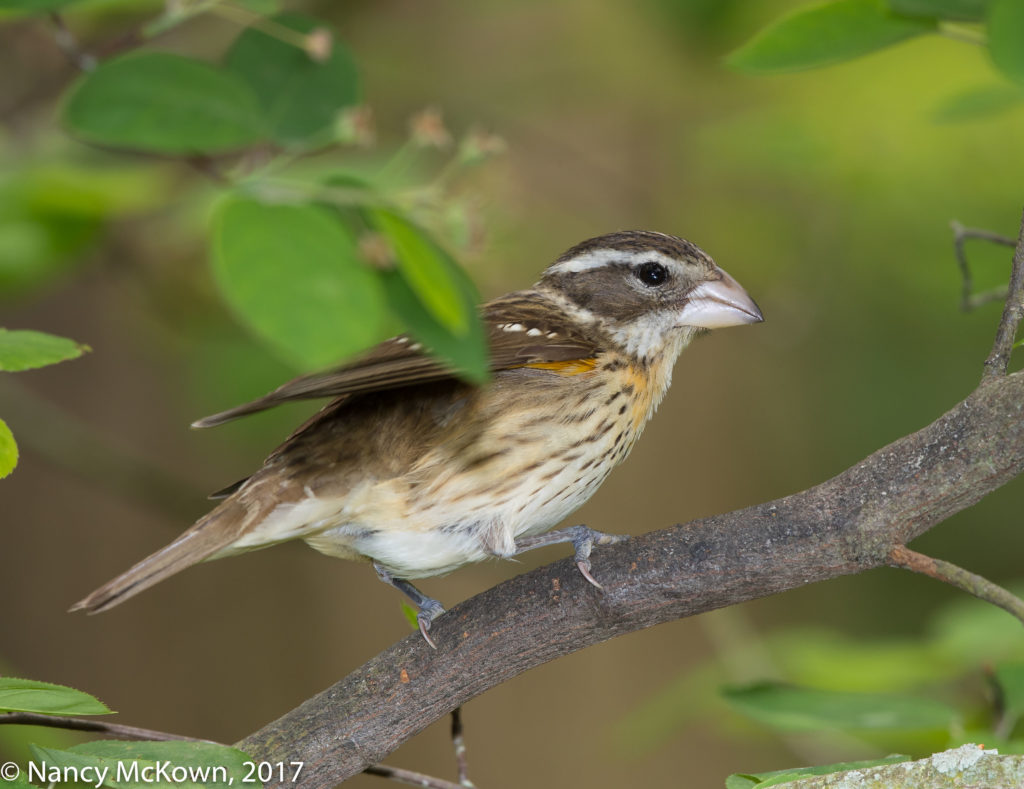Seasonal Changes in Bird Activity
Autumn is fast approaching and sightings of even our most common birds are down. Bird song is replaced with the high pitched hum (alternating strong then fading) of male cicadas. The prolonged lack of bird activity is eerie, but it is not unusual for this time of year.
Many of the migrators and year round residents are still around….just less conspicuous. They just finished raising 2 or 3 broods and are thoroughly done with displaying, singing and nest building. Molting feathers and plentiful ground level food supply allow them to remain less active. Plus, they’re resting up, getting fatter and conserving their strength.
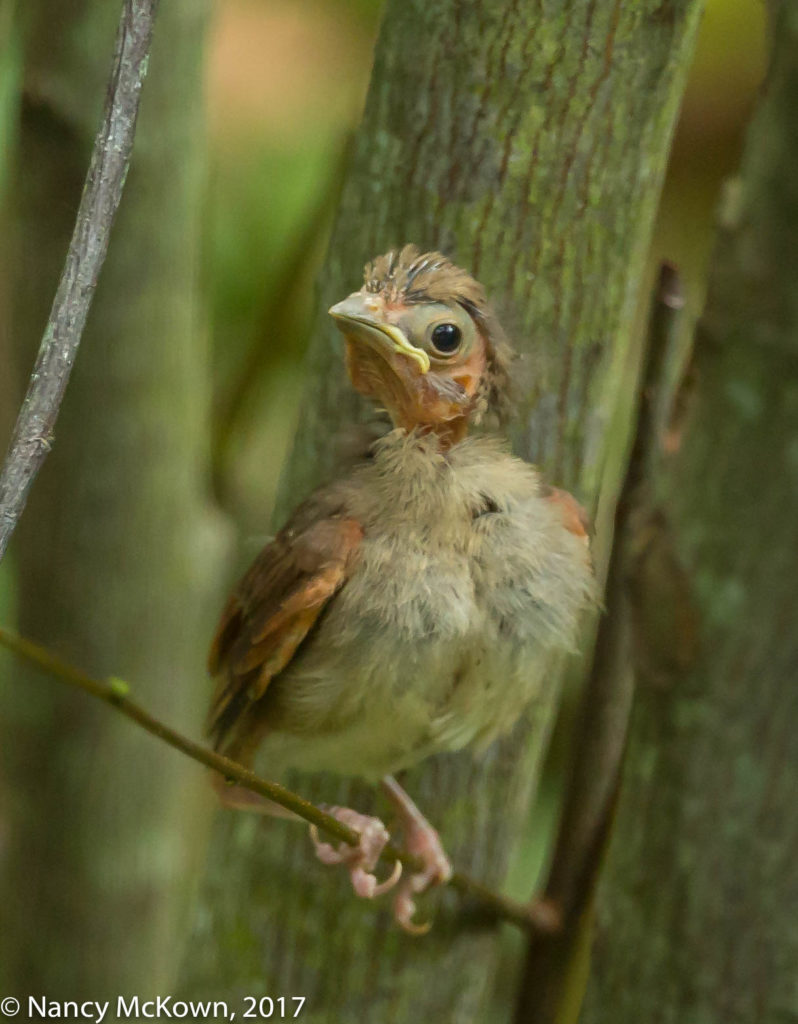
Anxiously Looking Around for a Parent.
No Flash attached.
ISO4000; f/4; 1/640 Second
Photographing Fledglings in Late Summer
There are a few late nesters (migrators and year round birds) who are still rushing around in an effort to raise their families. Cardinals can have as many as four broods and are often still going strong in late August and September.
This hungry young Northern Cardinal looks like he either fell out or was ejected from the nest a little early. He seemed comfortable when sitting on a branch, but struggled to climb up the tree trunk to get to his parent. (See photo 2.) I did not see him fly….but he was brave enough to jump and then use his feathers to float down to a lower nearby branch. The male parent in his post breeding molt still feeds the demanding fledgling. (See Photo 3.)
No Flash
I was on my way out the door when I noticed this little fledgling. It’s pretty obvious with the high ISOs and wide open apertures that I did not have time to attach a flash to the camera when I shot these images. Despite the shallow depth of field and somewhat grainy overlay, the filtered light was even and complimentary- enough to bring out some of the detail and texture of the emerging feathers on the fledgling and the molting feathers on the parent.
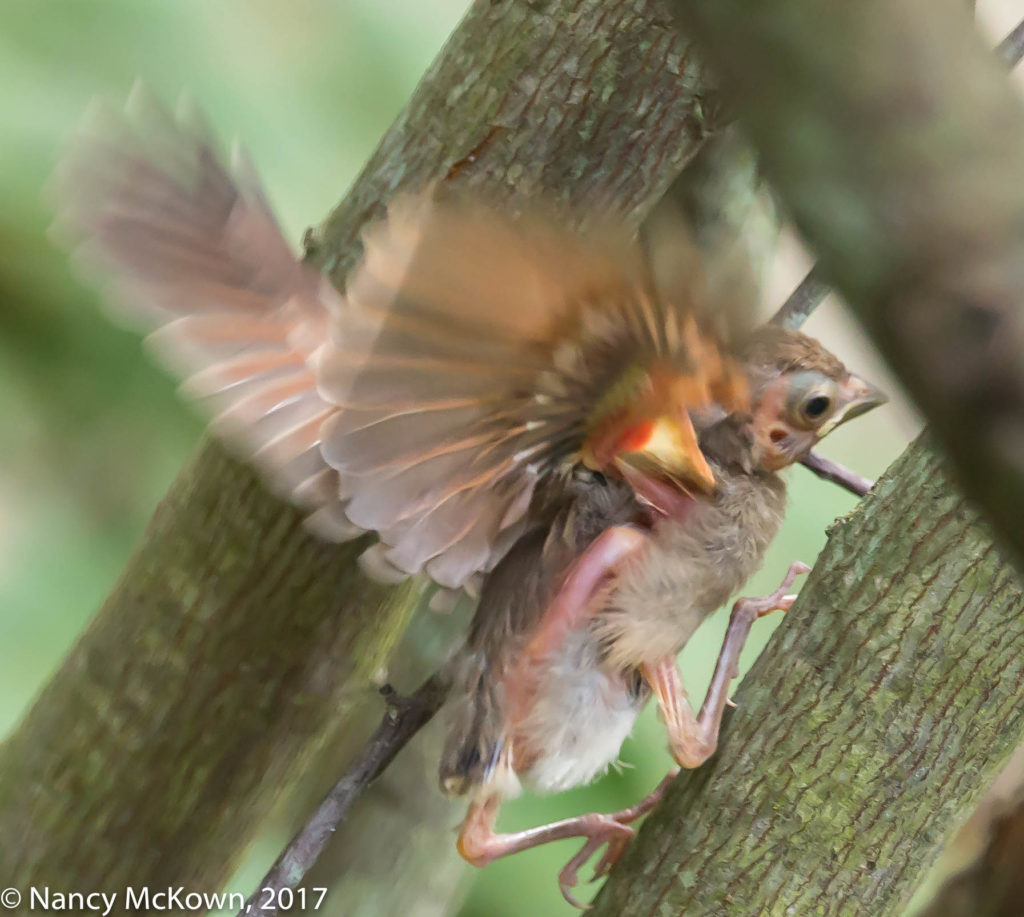
Looking more like a Nestling than a Fledging.
Using His Wings For Balance.
Climbing is Easier Than Flying.
ISO4000; f/4; 1/640 Second
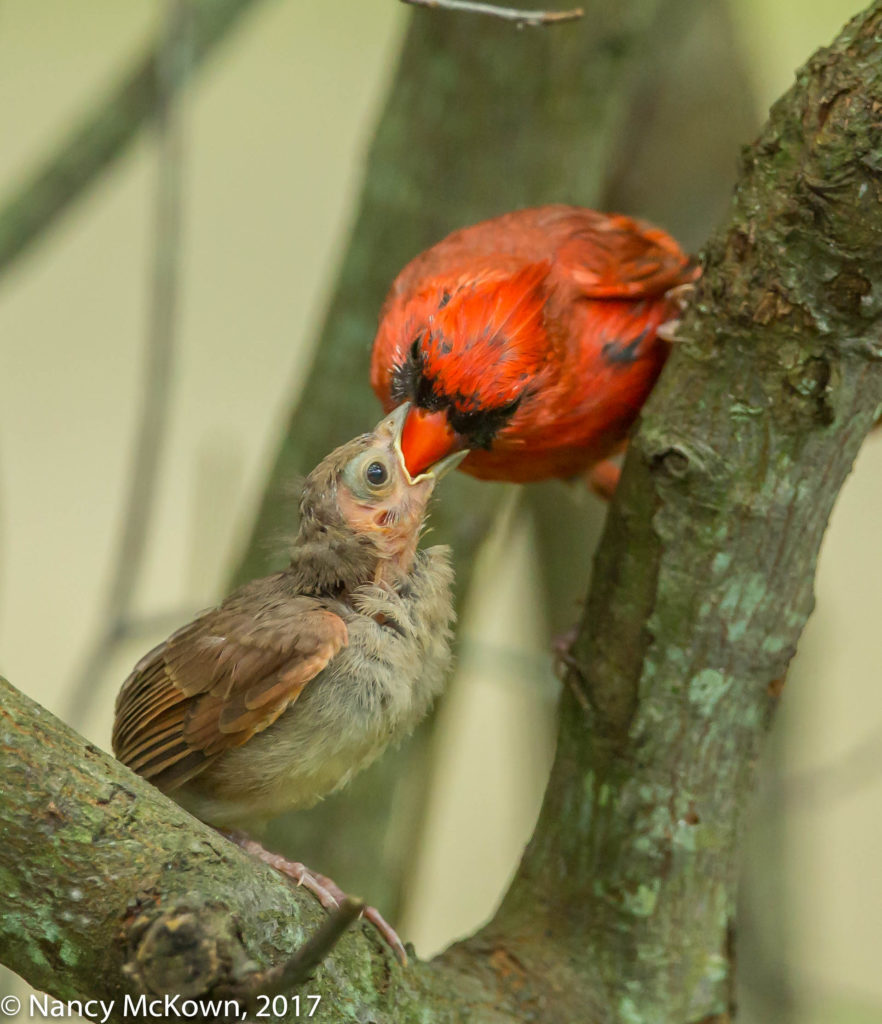
Male adult in his Post Breeding Molt
ISO3200; f/4; 1/640 Second.
It’s a face only a parent could love.









